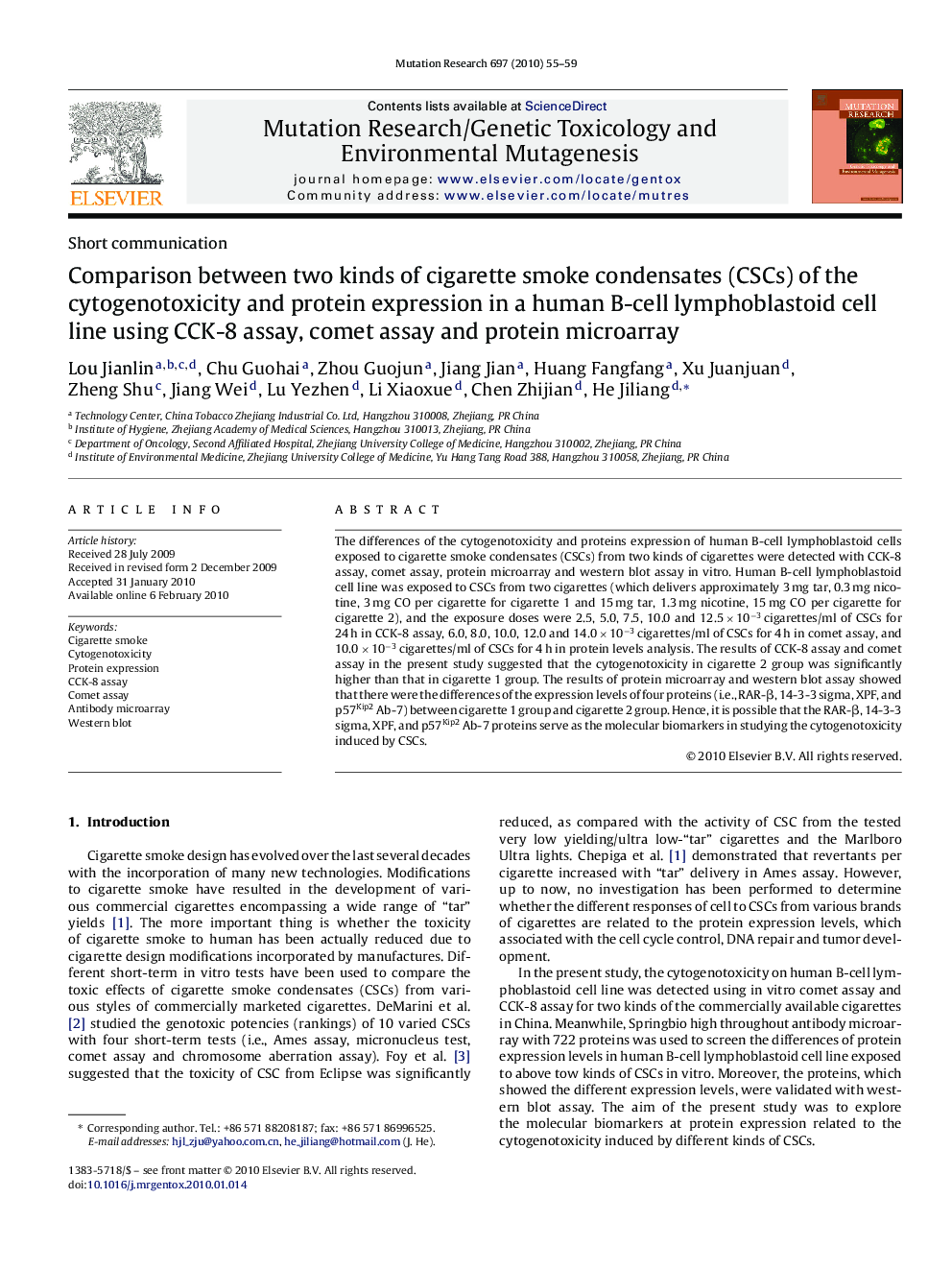| Article ID | Journal | Published Year | Pages | File Type |
|---|---|---|---|---|
| 2148564 | Mutation Research/Genetic Toxicology and Environmental Mutagenesis | 2010 | 5 Pages |
Abstract
The differences of the cytogenotoxicity and proteins expression of human B-cell lymphoblastoid cells exposed to cigarette smoke condensates (CSCs) from two kinds of cigarettes were detected with CCK-8 assay, comet assay, protein microarray and western blot assay in vitro. Human B-cell lymphoblastoid cell line was exposed to CSCs from two cigarettes (which delivers approximately 3 mg tar, 0.3 mg nicotine, 3 mg CO per cigarette for cigarette 1 and 15 mg tar, 1.3 mg nicotine, 15 mg CO per cigarette for cigarette 2), and the exposure doses were 2.5, 5.0, 7.5, 10.0 and 12.5 Ã 10â3 cigarettes/ml of CSCs for 24 h in CCK-8 assay, 6.0, 8.0, 10.0, 12.0 and 14.0 Ã 10â3 cigarettes/ml of CSCs for 4 h in comet assay, and 10.0 Ã 10â3 cigarettes/ml of CSCs for 4 h in protein levels analysis. The results of CCK-8 assay and comet assay in the present study suggested that the cytogenotoxicity in cigarette 2 group was significantly higher than that in cigarette 1 group. The results of protein microarray and western blot assay showed that there were the differences of the expression levels of four proteins (i.e., RAR-β, 14-3-3 sigma, XPF, and p57Kip2 Ab-7) between cigarette 1 group and cigarette 2 group. Hence, it is possible that the RAR-β, 14-3-3 sigma, XPF, and p57Kip2 Ab-7 proteins serve as the molecular biomarkers in studying the cytogenotoxicity induced by CSCs.
Keywords
Related Topics
Life Sciences
Biochemistry, Genetics and Molecular Biology
Cancer Research
Authors
Lou Jianlin, Chu Guohai, Zhou Guojun, Jiang Jian, Huang Fangfang, Xu Juanjuan, Zheng Shu, Jiang Wei, Lu Yezhen, Li Xiaoxue, Chen Zhijian, He Jiliang,
